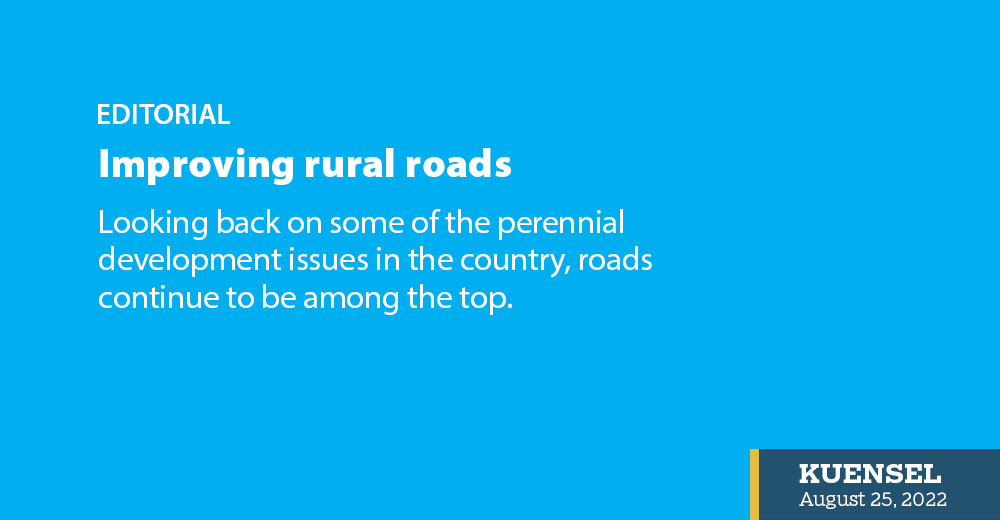Looking back on some of the perennial development issues in the country, roads continue to be among the top.
Roads are a major problem in Bhutan, not just in the urban areas but more so in the rural pockets of the country.
Going by the government statistics, road connectivity has witnessed impressive growth over the years. The priorities of all the governments after 2007 have also been the development of roads. However, voices from the rural parts of the country tell us a different story.
If the roads in the rural areas are not usable, how are they making the lives of the farmers any better? Why is it that even after almost 15 years since we embarked on a massive roads development programme roads continue to be a major development issue facing the farmers in the distant villages?
For a country like Bhutan where the terrain will continue to pose a serious challenge, surface connectivity is important. In rural areas, roads mean much more than just development. The livelihoods of the people depend on good connectivity.
Agriculture development or boosting agriculture productivity has been the central theme of all our development plans since the early 1960s. In reality, however, we are becoming more dependent on food and food products from our neighbouring countries.
For example, in the last five years, both production and area under cultivation of the two main cereals, paddy and maize, have declined. To put into context, between 2017 and 2021, the area under maize cultivation decreased by about 69 percent. What is more worrying is that the fallowing of land and emptying of rural households have been increasing across the country.
The recent renewal natural resources (RNR) statistics indicate that there is a need for urgent and serious interventions. It is not that we have not tried new and innovative methods to boost agriculture productivity. Farmers are being trained regularly on the adoption of new methods of farming and technology use. Even so, we continue to see rising rural to urban migration.
With all these developments, the shortage of farmhands should not be a major problem in the villages. In fact, it could even encourage young and educated Bhutanese to take up farming which could, in the long run, help Bhutan achieve its food security and self-sufficiency dream.
It is not difficult, therefore, to recognise that at the centre of all these lies better road connectivity. Transportation costs and lack of market are among the main challenges facing our farmers today. To stop rural to urban migration and to increase our agriculture productivity, investing in good roads is critically important. The sooner we do this, the better.


